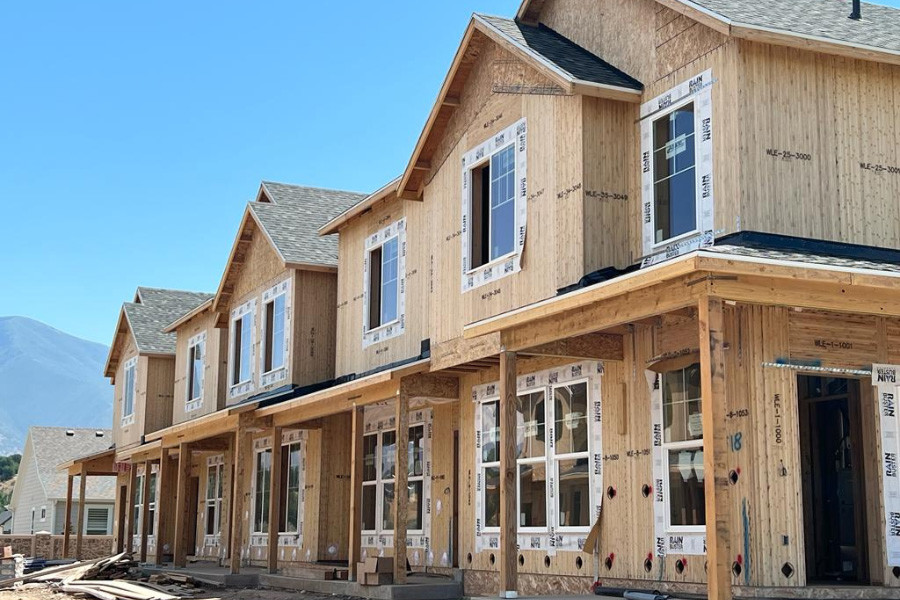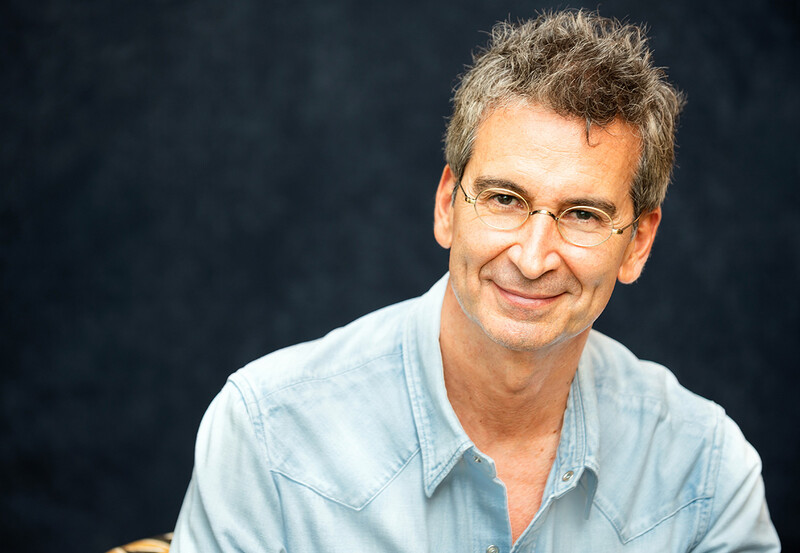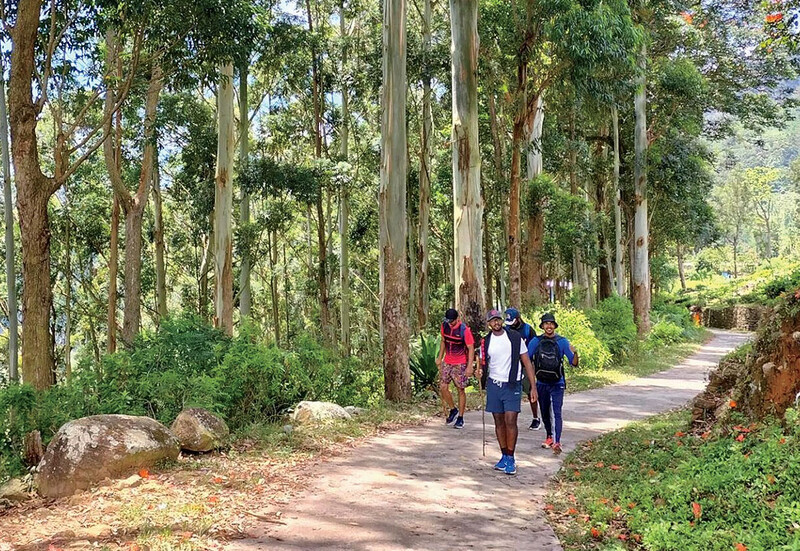One Man’s Quest to Tackle Climate Change with Wine, Bamboo, and Neurobiology
The year was 2004, and Hal Hinkle ’76BUS, ’13GSAS had decided to plant some trees. Millions of trees.
At fifty-one, Hinkle was winding down a successful career on Wall Street (twenty-two years at Goldman Sachs, then five running a global bond exchange), and he was trying to figure out how to spend his retirement. A lifelong environmentalist, he was captivated by the problem of climate change, an issue that seemed poised to become the defining challenge of the new millennium. Hinkle owned some property in Oregon, and launching an initiative to reforest the area seemed like a great way to give back to the local community while reducing America’s carbon footprint.
Hinkle began recruiting volunteers and sponsors for his “million-tree” campaign. With his effervescent charm backed up by a deep concern about the climate crisis, he proved the perfect spokesperson for the project. He visited elementary schools, forged connections with nonprofits, and sought out donors. “People thought this was cool,” he remembers. But then someone suggested he speak with a scientist at the Sierra Club, one of the world’s largest environmental organizations. He was expecting kudos, but what he got was a dose of reality.
“The scientist basically told me it was the dumbest fucking idea he’d ever heard,” Hinkle says with a laugh. The problem with trees, he soon learned, is that they grow too slowly to stop the planet’s accelerating march toward “tipping points,” thresholds that mark irreversible changes to the earth’s environmental systems. “He said if you really care about climate change, this isn’t what you should be doing,” remembers Hinkle. “It stopped me dead in my tracks.”
For Hinkle, the interaction with the Sierra Club taught him an important and humbling lesson. The battle against climate change is largely a race against time. If he wanted to make a difference, he’d have to direct his resources and energy toward more-immediate threats. It was a realization that would shape the next two decades of Hinkle’s so-called retirement in ways that were often surprising even to him. Since his aborted attempt at planting millions of trees, Hinkle has launched a nonprofit dedicated to climate-change education and founded an eco-friendly organic vineyard, and he now runs a company creating carbon-negative construction materials. “I don’t think I have a lot of chapters left in my life,” Hinkle says. “I want to use that time to motivate people to make decisions that support the climate.”
Hinkle is the first to admit that his lifelong commitment to nature is somewhat surprising. The son of a bank teller and a grocery clerk, Hinkle grew up in a modest home in a neighborhood of Los Angeles that had far more concrete than trees. In the 1960s, when Hinkle was still a kid, environmentalism was in its infancy, and to the extent that anyone spoke about the environment, it was in terms of “conservation.” For Hinkle, it was a term ripe with meaning. At home, his parents discouraged any kind of waste. “We had so little,” Hinkle remembers. “We were expected to take care of everything, and for me that included the earth.”
A first-generation college student, Hinkle ended up following a friend to the University of California, Irvine, where he enrolled as a biochemistry and psychobiology major. During his time there, he read three books that profoundly shaped his perspective on the world. Frances Moore Lappé’s Diet for a Small Planet led him to embrace a vegetarian diet, and Rachel Carson’s Silent Spring deepened his devotion to the environmentalist movement. But it was the Club of Rome’s report The Limits to Growth that shook Hinkle to his core. “That scared the bejesus out of me,” he says.
Published in 1972, The Limits to Growth was the product of a study led by MIT scientists that aimed to determine the consequences of unchecked population and economic expansion on a resource-limited planet. The report’s predictions were dire, and though they have proven to be wildly off base, they played a major role in launching the nascent environmental movement into the mainstream.
After graduating from the University of California, Hinkle arrived at Columbia Business School with vague ideas about becoming a hospital administrator. But he hadn’t fully decided on a career, which is how he ended up on a recruiting trip to Goldman Sachs. He was an unlikely prospect for one of Wall Street’s most prominent banks. During the visit, he cornered a partner and began questioning what he saw as Goldman’s single-minded focus on profit. Didn’t these finance guys ever think of anything besides making a buck?
“When I left Goldman after the interview, I thought that not only would I never be invited back, but Columbia might never be invited back either,”
Hinkle says. “I didn’t fit their model. I was brash, I was attacking capitalism, and I didn’t get the profit motive.”
But rather than dismissing Hinkle, the Goldman partner decided to embrace him. Hinkle was clearly intelligent, if a little unorthodox. The Goldman partner told him the firm was exploring ways to apply the techniques they used for raising capital in the private sector to nonprofits, starting with a ballet company in New York City. After the meeting, Hinkle went to see the ballet, and his perspective shifted. He realized that with the right mindset it was possible to use the tools of capitalism to make positive changes in the world. Within days, Hinkle had a job offer at Goldman.
Hinkle would spend the next twenty-seven years on Wall Street, but his passion for the environment was always close to his heart. He continued to follow a dairy- and meat-free diet, was an early adopter of the Prius — he still drives one to this day — and even visited the Lamont-Doherty Earth Observatory to learn more about its climate research. “I was so inspired by the serious research taking place at Columbia and concluded that there was nothing more important to focus on than climate change,” he says. By then Hinkle was also beginning to understand the limits of capitalism when it comes to preserving public goods — resources such as clean air or wilderness that can be used by everyone and sold by no one. His years at Goldman had taught him that there’s little incentive for profit-oriented individuals and organizations to bear the cost of preserving public goods, so they are often destroyed through overconsumption, pollution, and neglect. “It’s one of capitalism’s biggest shortcomings,” says Hinkle. “Usually the solution is to get the government involved, because it can tax everyone to support that public good. But now we’re in a climate situation that requires a multinational solution, and it’s hard to bridge all the differences between countries. Now the question is: are we capable as a species of making a collective decision that saves the earth?”
With this question in mind, Hinkle sold the bond exchange in 2004 and turned his attention to finding ways to counteract the climate crisis that wouldn’t entirely depend on flawed market mechanisms or slow government responses. First came the Million Tree Initiative, then after his “reeducation” on that issue, he launched a foundation dedicated to climate education and published a series of reports that he circulated among former Wall Street colleagues, whom he felt had the means to make personal and professional decisions that could contribute to sustainability.
But Hinkle knew that if he wanted to make a serious impact, he’d have to find ways to change the habits of entire populations. He decided to use his foundation to mitigate air pollution in New York City and partnered with two nonprofits: the Environmental Defense Fund and the Allergy and Asthma Network Mothers of Asthmatics. Together they convinced New York’s then mayor, Michael Bloomberg, to introduce an anti-idling ordinance.
Despite the success of the anti-idling campaign, the work Hinkle did through his foundation also revealed just how difficult it is to change people’s behavior, even when those changes benefit both individuals and society. “I thought of idling as a litmus test,” he says. “It costs you nothing, and if you can’t bring yourself in your daily life to not idle, then you’re not going to fight for the climate. If we don’t get people to make decisions that support the climate, then we’re not going to solve climate change.”
And so Hinkle, forever curious and not one for half measures, decided to study human decision-making. In 2006 he enrolled in the neurobiology and behavior PhD program at the Graduate School of Arts and Sciences. His dissertation focused on how intense exercise changes people’s behavioral response to food, and insights from that study would ultimately inform Hinkle’s approach to climate action. “In classical economic decision-making models, they assume that the individual makes a rational decision based on their current context,” says Hinkle. “What I learned through my PhD is that we have this very complicated and messy decision-making process that might more properly be called a decision-feeling process.”
Hinkle’s new perspective on decision-making helped explain why he hadn’t been able to make as much of a difference as he had hoped through education. “You can divide the brain into two main processing units. One makes its decisions incredibly fast, and the other is really slow. We make our decisions principally using the fast system that is focused on the here and now, which doesn’t account for the externalities of our decisions in the future. Getting people to consider the longer-term impact of climate change is an incredible challenge.”
In 2009, while in the middle of his PhD, Hinkle made the decision to relocate from New York back to California. With his children fully grown, Hinkle envisioned living somewhere rural. But after more than a dozen trips to look at homes, Hinkle returned to New York City in early autumn feeling dejected. Then his realtor called to tell him about a new property that had just hit the market: a ranch in Sonoma County’s Alexander Valley, complete with more than thirty acres of decades-old grapevines.
The vineyard had fallen into disrepair, but Hinkle saw an opportunity to apply his business acumen, his climate ideals, and his new understanding of human decision-making. He believed he could create a vineyard that would be both profitable and sustainable, and the end result, good organic wine, would appeal to both a consumer’s conscience and the pleasure principle.
Over the next few years, Hinkle approached the project with scientific rigor. He mapped out the soil composition and water-holding capacity of every square meter of the vineyard, seeking to nourish his rootstock without overtaxing the water supply. He changed the orientation of new grapevines to temper their sun exposure and minimize the need for canopy management. He restored the vineyard’s creeks and added plants to attract beneficial native insects. Once his vineyard was certified as organic, sustainable, and bee-friendly, Hinkle worked with the California Land Stewardship Institute to create a new vineyard-specific climate-adaptation certification, which requires demonstrating a consistent reduction in greenhouse-gas emissions over time. His was the first vineyard certified as both organic and climate-adapted.
Hinkle’s vineyard, Sei Querce, has already influenced the agricultural practices of Sonoma County by demonstrating to neighboring vintners that sustainability doesn’t have to come at the expense of profit. Many of them have since changed their operations to be more climate-friendly. But Hinkle knew he could do more. “I wanted my wine to tell a story and get people to think about climate change,” Hinkle says. “But that’s tiny, it won’t move the needle. You can only move the needle if you focus on the big things, like power generation — or buildings.”
“Why aren’t we using nature’s strongest, fastest-growing fiber in buildings?”
An opportunity to focus on “the big things” would come sooner than he expected. After getting the vineyard up and running, Hinkle was planning to build a new house, and he asked his builder to recommend green construction materials. Among them was a bamboo-based engineered timber from a small California company called BamCore. Although Hinkle ended up selecting a more fire-resistant product — a prescient choice, since the home would be hit by wildfires twice in the next three years — Hinkle was fascinated by the concept of using bamboo. “The idea just got stuck in my head,” says Hinkle. “Why aren’t we using nature’s strongest, fastest-growing fiber in buildings?”
Hinkle set up a meeting with the BamCore founders, whom he says “at that point, were just the proverbial two guys in a garage,” then spent the next year researching the company’s product. He discovered that bamboo is widely used as a construction material throughout the world, except in places like the US and Europe where wood from trees is plentiful. He also learned that buildings account for 40 percent of greenhouse-gas emissions. Most of these emissions come from operating the building’s heating, lighting, and air conditioning, but a substantial portion comes from creating building materials and the process of construction. “All the focus on decarbonizing buildings has been on the impacts of the operations side,” Hinkle says. “But what really matters today, because of the urgency of climate change, is the immediate upfront carbon emissions of construction.”
Recognizing that using bamboo to frame houses and multistory buildings could dramatically reduce the climate effects of construction, Hinkle offered to make an investment in the business. Within a few years, he joined the company as CEO. Since then, BamCore has blossomed into a bona fide construction company, and its appeal is great. Bamboo’s strength means that less material is required to build a home, and since each structure is cut to order, it only takes a handful of workers to assemble the frame. These features save on the costs of construction, but for Hinkle the real value of bamboo is that the plants absorb carbon from the soil and atmosphere.
“The essential principle is trees are good, but bamboo is better,” Hinkle says. “It’s nature’s fastest-growing and strongest structural fiber; it regrows where you cut it in just one year; the way we use it, it’s more thermally efficient than wood; it’s strong enough to handle earthquakes; and it’s carbon-negative, because when you put it into a building, you’re storing all the carbon it has sucked up.”
In spring 2023, BamCore was awarded a $2.2 million grant from the Department of Energy as part of a program to accelerate the development of buildings that store carbon. Since then, Hinkle and his team have started exploring ways to apply their technology to multistory commercial buildings.
With BamCore, Hinkle feels he has at last satisfied two of his new criteria for climate projects. His product creates an immediate and scalable environmental impact, and it offers tangible rewards to the homeowner. Hinkle understands that regulators and the broader construction industry still need to be convinced that engineered bamboo is the future. “The construction industry isn’t very innovative and is famously hard to change,” he says. What’s more, the short-term consequences of a building’s emissions footprint, the carbon cost of its construction, is too often ignored by policymakers and industry. “Nobody is required to care about this,” he says.
But Hinkle cares, and for him that is motivation enough. His life’s work has been a balancing act between profit and nonprofit, rationality and instinct, individual and community, the local and the global. Some people might find these tensions paralyzing, but for Hinkle this is the essence of a life well lived. “There’s a saying in the climate community: ‘Don’t worry about the earth, it will be just fine,’” says Hinkle. “The earth will continue to evolve geologically and biologically, with or without us. But if we care about our human evolution and long-term survival, then we have to figure this out.”
This article appears in the Winter 2023-24 print edition of Columbia Magazine with the title "To Do Something Good for the Earth."




